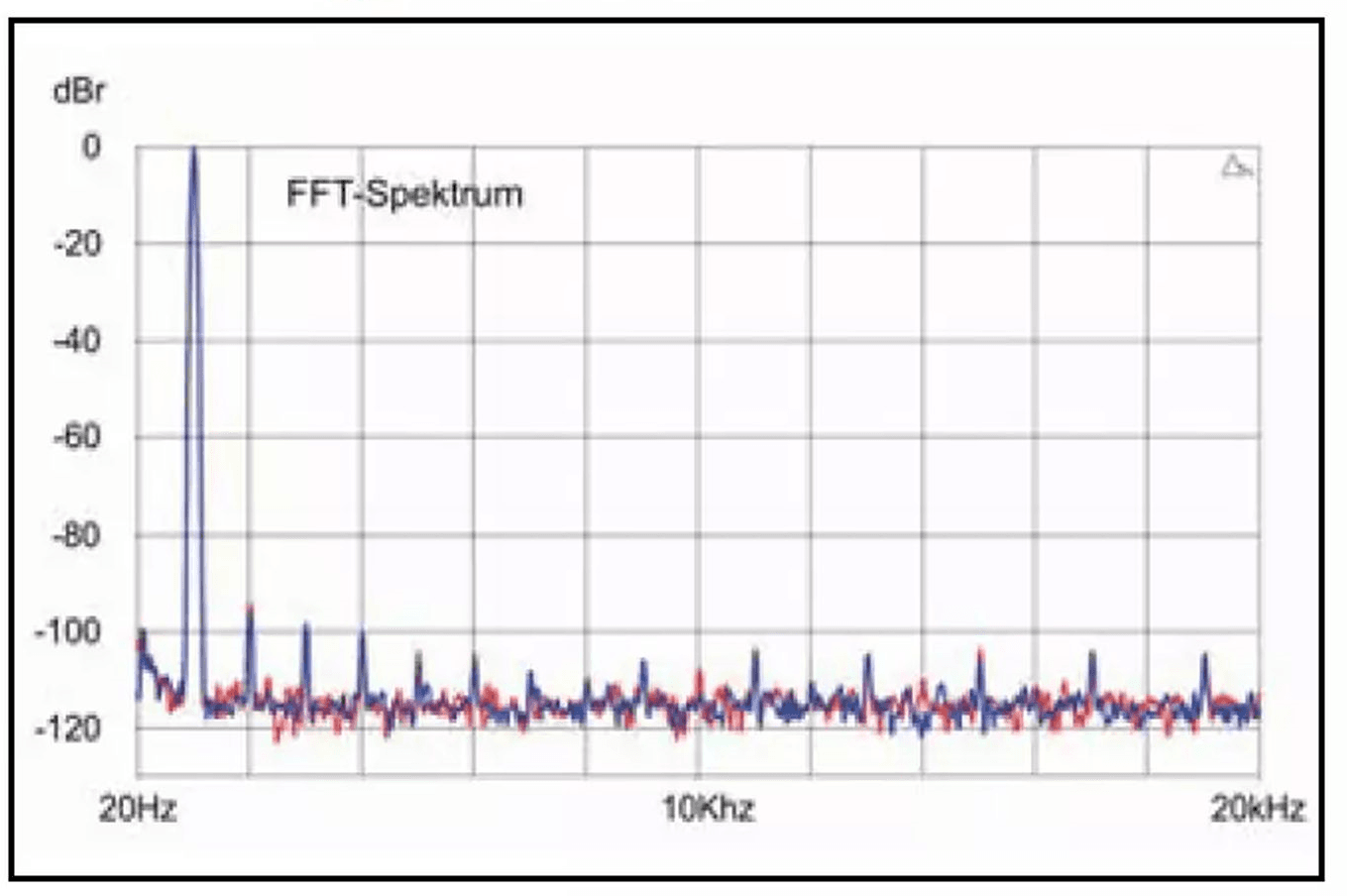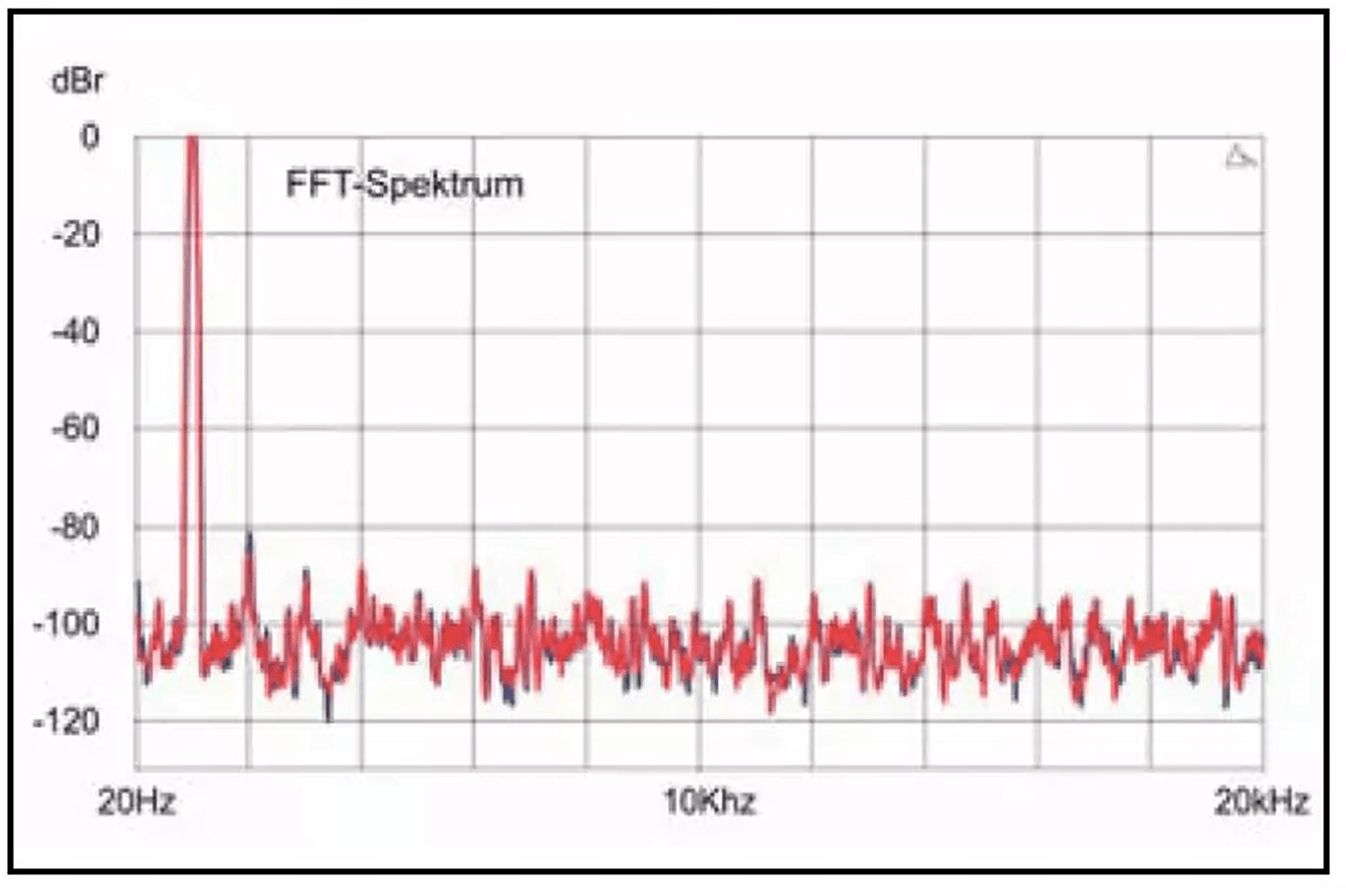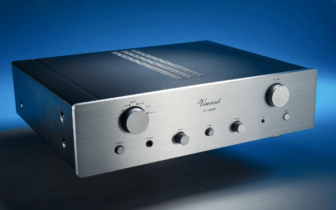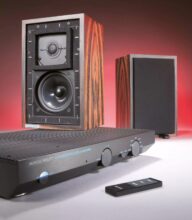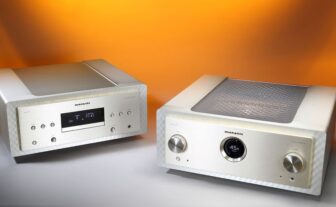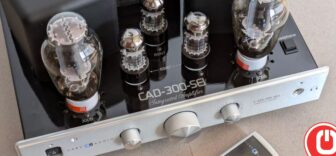Audiolab 9000A and 9000CDT Review
Until now, the 8000 series marked the limit. However, with the devices of the 9000 series, Audiolab is pushing into higher, previously unexplored territories. We are eager to see what the promising components—a CD transport and a well-powered integrated amplifier in an appealing design—are capable of.
by Tom Frantzen
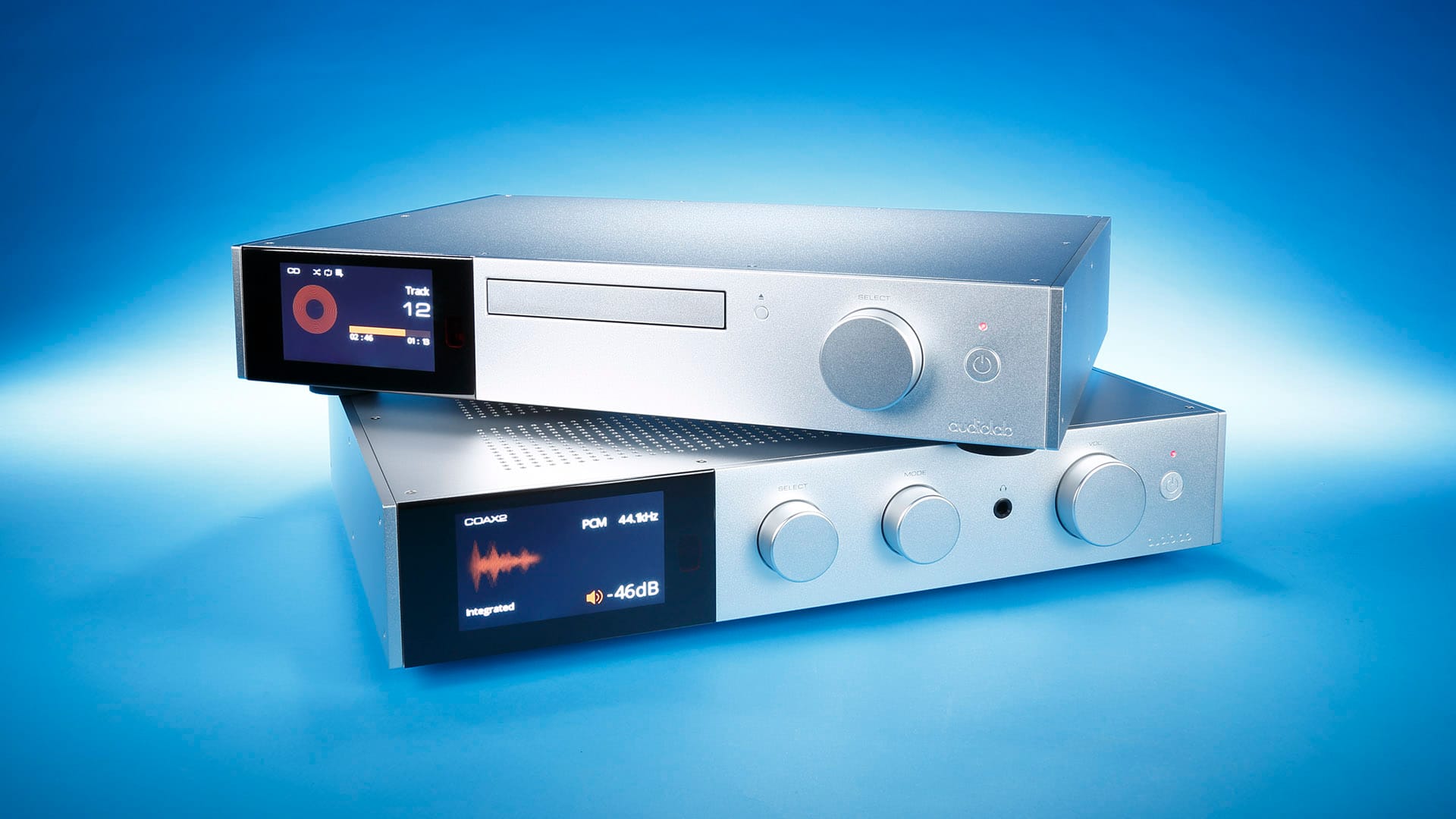
Audiolab has always been known for excellent sound and value at affordable prices. Founded in 1983 by Philip Swift and Derek Scotland, who bonded as students at Imperial College over a shared love of hi-fi and criticism of high prices, the brand aimed to realize exactly this symbiosis. That the corresponding devices were also available in this country in the distant past under the umbrella of Cam-tech—probably due to the then-established German brand “audiolabor”—and later with a Formula One touch and unfortunately a hefty monetary surcharge as TAG McLaren, we mention here only for the sake of completeness.
Since the early 2000s, the original brand has been back in Germany under the new owner International Audio Group, while “audiolabor” is long since industrial history. In fact, with the entirely new 9000 series, Audiolab is quite obviously striving for higher things. Fortunately, this is not only reflected in the somewhat more ambitious price structure but also quite obviously in the hierarchy, topology, and technology of the amplifier, which is built as classically as it is strictly in Class AB and dual-mono manner.
Not surprisingly, the British refer to the new 9000A, costing $2,530, as the best integrated amplifier Audiolab has ever built. The previous flagship, the 8300A, is still available and occupies the premium price point around $1,430, which, including Phono MM and MC (!), still represents a bargain. At one point, “MC” also appeared in the documents for the 9000; perhaps this option, which was noticed in the measurement lab, fell victim to budget cuts after all. No big deal, for an integrated phono section, the Audiolab is of exceptionally high quality.

GENERAL STAFF: A system remote control is included with each device. However, these do not seem particularly cleverly coordinated. For example, if you set it to “CD”, the volume control no longer works.
New Class
The larger model is not based on its little brother but was largely newly developed. This is already evident in the power rating of 2 x 100 watts into 8 ohms and 2 x 160 watts into 4 ohms, so about a third more powerful than the certainly not weak 8300. A low-leakage 320 VA toroidal transformer with generous smoothing of 4 x 15,000 microfarads of capacitance contributes significantly to this.
The current lineup in the portfolio has been expanded upwards with the newly introduced 7000 and 9000 series and is more finely staggered, if you will. There are (at least still) the 6000, 7000, 8000, and now 9000 lines. Audiolab, along with other well-known traditional brands like Castle, Mission, Wharfedale, and Quad, belongs to the aforementioned International Audio Group, which develops with established designer personalities like Peter Comeau or, in the case of Audiolab electronics, Jan Ertner in the UK and manufactures in the Far East according to the most modern industrial ISO standards.
7Review was able to verify this on-site in China back in 2006, and as a production engineer, I was truly impressed. What progress compared to the first small series, which in the late ’70s literally emerged in a small student kitchenette in Cambridge—not just a legend!
The current integrated amplifier 9000A, weighing just under ten kilograms, definitely sets standards in terms of features by Audiolab standards. In addition to the aforementioned power along with proven “Complementary Feedback” technology for the most stable and linear operating conditions, it was given a DAC that defines itself as top class by default with the top converter module ESS Sabre ES9038 Pro. PCM and DSD up to the highest Hi-Res realms (up to 24-bit/768 kHz or DSD512) are processed via USB (24/192 over the digital inputs), FLAC and WAV, plus complete MQA decoding, aptX Bluetooth, and a variety of switchable digital filters are offered.
A new, very good phono preamp with JFET stage is also on board, but limited to Phono MM. The extensive, contemporary analog-digital feature list is rounded off with a current feedback headphone amplifier, which, according to Audiolab, knows how to competently handle any dynamic headphones. What the IPS LCD display does, especially on the amplifier, when it optionally displays, for example, VU meters or an LED power display, commands enormous respect and looks dramatically good.
As usual from Audiolab, the 9000A can function as a pure preamplifier, pure power amplifier, or coupled as an integrated amplifier when needed. There are no restrictions, so even inserting processors, equalizers, etc., is easily possible. This naturally also includes use in home cinema, if someone prefers to drive their front speakers with superior stereo electronics rather than the AV receiver. Commendable.
The high claim is also symbolized by the balanced input, for example, for the favorite source.
Congenial Pair
If it ever made particular sense to combine within a manufacturer’s portfolio, it does here. Because beyond the obviously matched “exterior” with the two impressive IPS displays, the 9000CDT is a pure CD drive of very high quality that relies on a corresponding DAC but was also specifically tuned with and to the ESS in the 9000A. The interaction of the two 9000s is a special tactile pleasure. Naturally, the 9000CDT, with the usual digital outputs, also allows cooperation with other, even external stand-alone DACs, but oh, just take a look at the two devices together!
Audiolab “delivers”: That means top sound and features at the higher price point as well.
The design is almost reason enough for the complementary purchase, but in fact, the audio CD-optimized drive is of exquisite quality, operates quietly and reliably, is made of high-quality materials on an aluminum base, and is hermetically electromagnetically shielded; the entire construction is designed for minimal friction, vibration, and resonance. A master clock and a so-called differential “line driver” are intended to ensure low-jitter signal processing.
If that were not enough, the signal, read out at multiple speeds when necessary, is buffered in a read-ahead buffer and read from there. This is otherwise known from shock-sensitive mechanisms, such as in portable CD players or car radios; it ensures good playback even of scratched CDs, but also optimal decoupling from mechanical movements, even if it’s ultimately only a few musical bars, that is, seconds. In addition, the CDT allows playback of CD-R/RW and, via a rear socket, the playback of FAT12/16/32-formatted USB storage devices with common codecs, ranging from MP3 and WMA to WAV, thus including lossless HD tracks. The impressive IPS LCD display provides razor-sharp and colorful information about system settings, format, track details, and more.
Since the CDT comes in at a “manageable” $1,320, precisely because no potentially redundant DAC was installed here and therefore doesn’t have to be paid for, even those who don’t necessarily count the CD among their favorite media may be tempted.
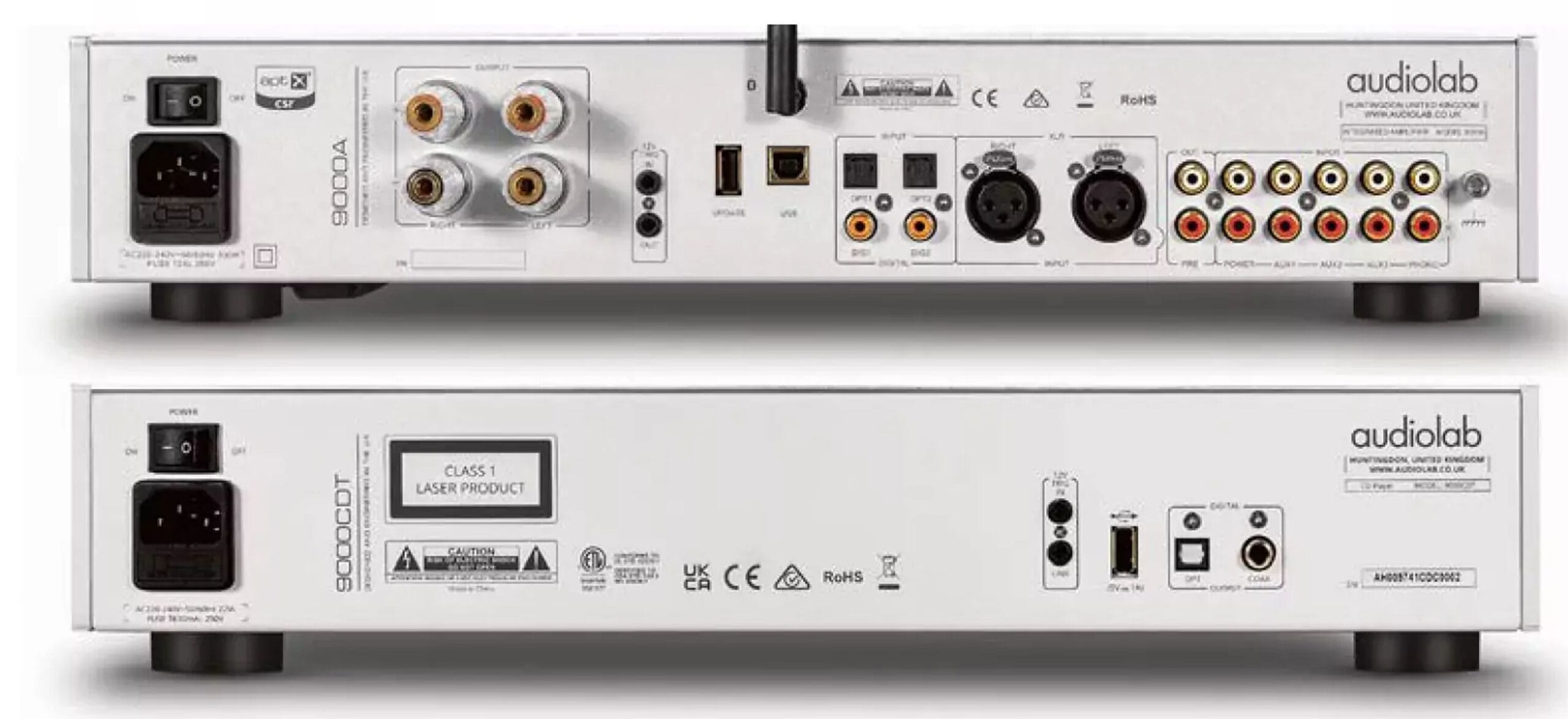
Contact-friendly: While the drive (below) naturally relies on a DAC, the integrated amplifier with built-in DAC, phono, and headphone amp offers connections galore.
Audiolab traditionally keeps the CD flag flying high alongside the meticulous engagement with DAC/streaming. This is evident in the 6000 series drive as an entry-level solution as well as in the various 8000 series gradations up to the “jack-of-all-trades” 8300 CDQ, which I even purchased after the test because, for around $1,650, it included a high-performance CD player, MQA-capable DAC, and rudimentary preamplifier functions all at once, thus setting standards in terms of features—and, of course, it sounds very good!
Less Good
If you don’t want to get annoyed because the remote control doesn’t react or reacts differently than desired, you should use both supplied system remote controls and preset one to “AMP” and the other to “CD,” possibly labeling them accordingly. In particular, the fact that the volume function does not respond when you have set the remote to “CD” is annoying to the point of—sorry—stupid and doesn’t fit with the otherwise excellent overall impression of these components. Even satellite receivers and TVs from different manufacturers can do that better. In the small 7Review listening room, the new combo scored exactly as one would expect from Audiolab.
Thelma Houston gave her all with “I’ve Got The Music In Me” (Sheffield), where the accuracy of the rhythmically immensely driving piece was particularly pleasing. Meanwhile, with the legendary Bill Ramsey on DALI’s excellent Epicon 6 floor-standing speakers, the naturalistic portrayal of the extremely characteristic jazz voice pleasantly caught the ear. Both stand as if carved in stone, focused in the middle between the speakers, and also detach very nicely from the speakers. Moreover, both were rightly popular demo albums in hi-fi studios in the ’80s and, I think, can be played again 40 years later.
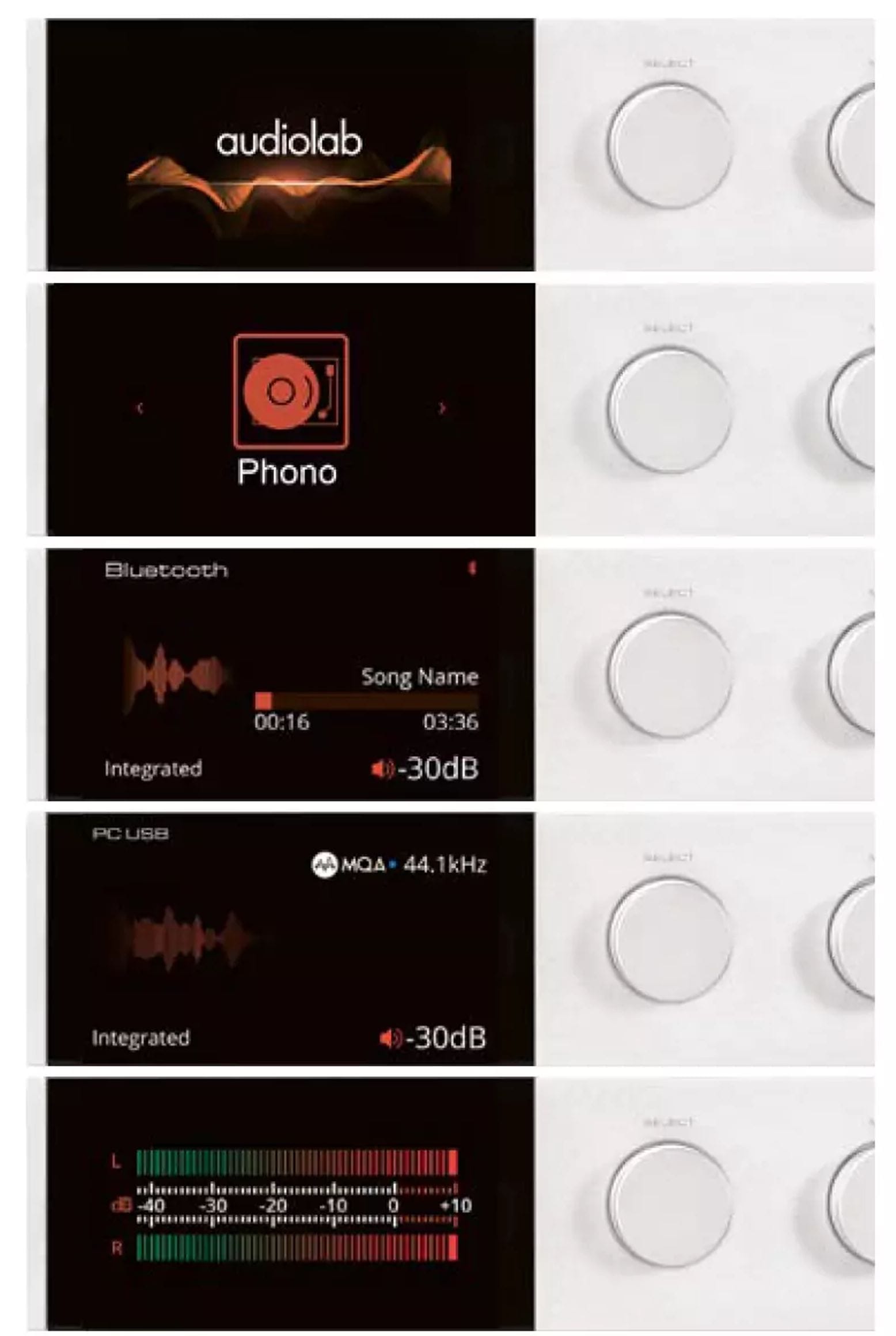
The IPS LCD display installed in both devices is very powerful and convincing in its display. This applies especially to the level/power display of the amplifier.
WE LISTENED WITH
Ramsey/Thielemans: When I See You
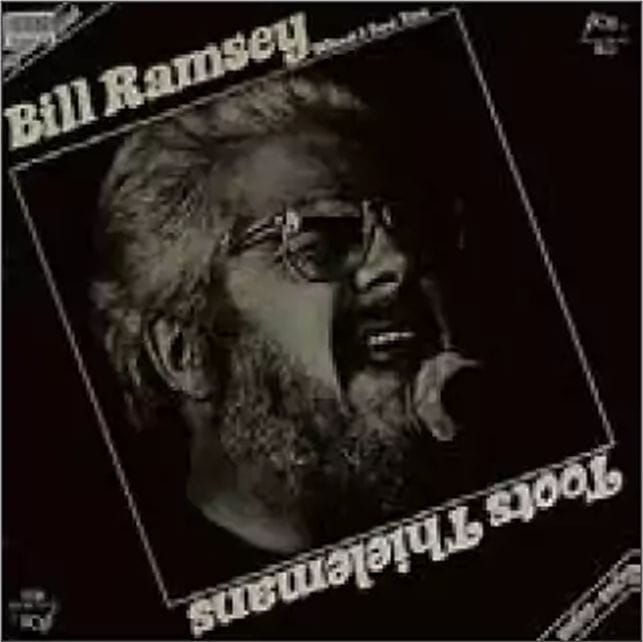
Two power jazz musicians having a lot of fun.
Thelma Houston: I’ve Got the Music in Me
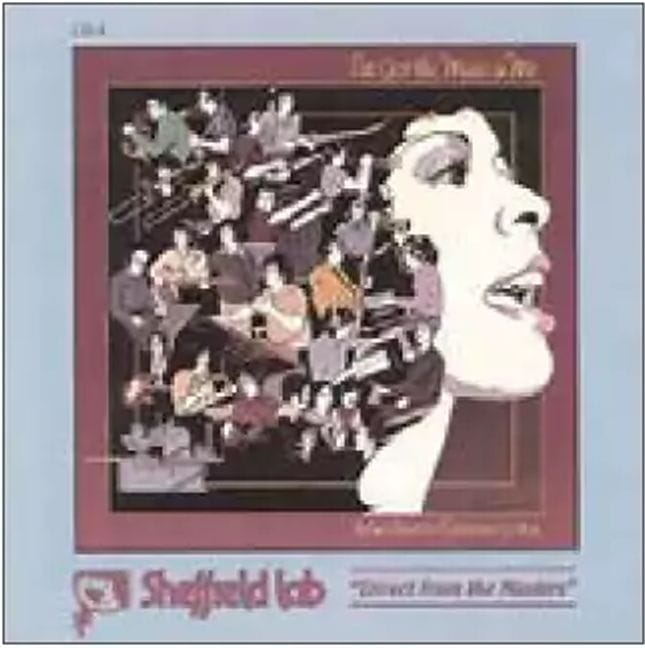
A hit, even if her song “Don’t Leave Me This Way” is more well-known.
The power and glory of the new Audiolab combination finally revealed itself with pronounced spaciousness in “Also Sprach Zarathustra” by Richard Strauss under Georg Solti, which I had as a Japanese pressing and which strongly reminded me to watch the cinematic masterpiece “2001” again. Here, as is well known, some of the deepest tones and heavy drum beats in classical music are united and thus become a touchstone for any system. Another dynamic challenge is Chuck Mangione’s well-known soundtrack “Children Of Sanchez.” Rediscoveries are a joy!
The impeccable timbre of the Audiolab devices makes it clear time and again that you don’t have to spend a fortune to realize unique and lasting musical experiences with particularly well-executed and tuned components. Both the amp and the drive—connected to the amplifier’s DAC or externally—each proved to be highlights of their class. That they also score visually should not be forgotten.
The 9000A delivers a “fast,” clear, and superbly deep and spacious soundstage with a confident, well-defined foundation. The bass is both agile and punchy—like few heavyweight pro boxers. It doesn’t run out of breath quickly, even with more challenging loads. It is said to handle two-ohm loads for short periods, although we didn’t test this. In any case, it works through the scores of various music genres highly musically, with temperament and steadfast stability.
One might almost say: It approaches the work with empathy and emotion without being picky like some other amplifiers. Vocals, drums, natural instruments, or even Yello’s impressive phase experiments? Not only is all this no problem but also thrilling.
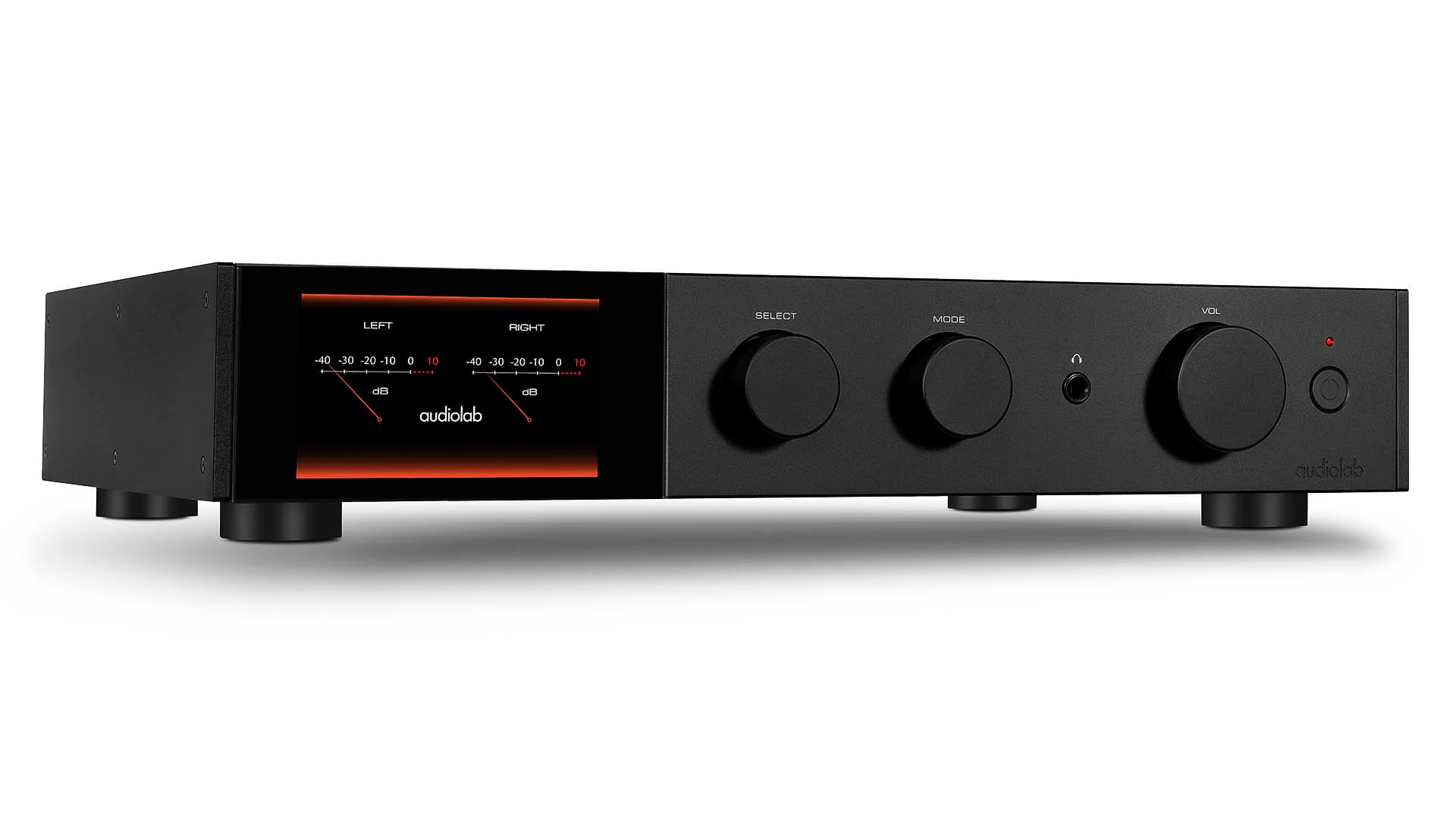
APPEARANCE: Even in black, the Audiolab devices make an impression, and the IPS display remains an absolute eye-catcher.
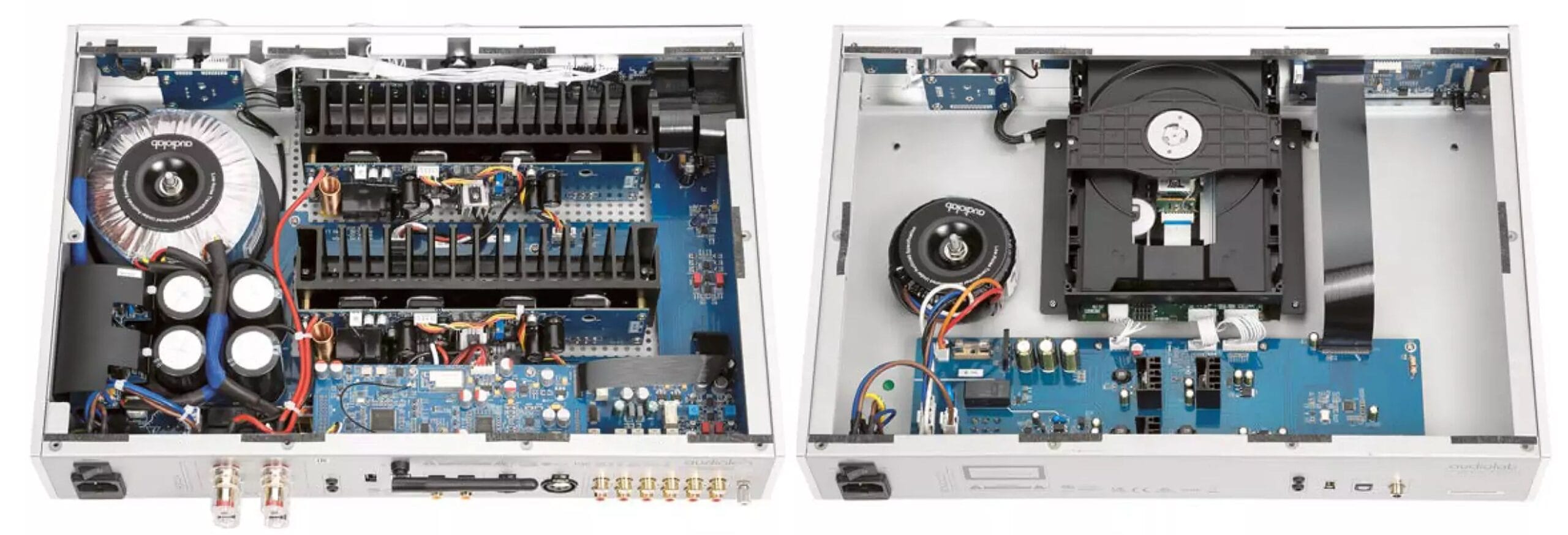
The interior of the Audiolab components, which is accessible only with very small Torx keys and therefore difficult to reach, is convincing: efficient, modern design with classic topology.
Turntable
We gladly attest that the accompanying drive has pronounced neutrality and smooth operation. That even a transport, as they say nowadays, contributes to the final sound result has been our everyday experience for decades, even if this contribution may be somewhat smaller than that of the digital-to-analog converter and output stage. There are not many stand-alone drives offered anymore, which shows the decreasing demand for CDs in the “new world.” The Audiolab sets, for its $1,320, perhaps no entirely new standards but is of truly excellent quality and is surpassed by no other candidate in the affordable market segment. You can confidently assume that Audiolab has thoroughly studied the current competition.
The technological measures for sound optimization, mechanically or in terms of the precise, low-jitter master clock, pay off. I would entrust my CDs to it anytime, and 7Review readers know that, with around 6,000 pieces, the CD is my most-listened-to source and will probably remain so for the time being.
And in conjunction with the ESS Sabre in the 9000A, the duo reaches very high audiophile spheres that should satisfy even demanding music listeners. Even though the competition in the amplifier segment around $2,000 to $2,500 is very, very strong in terms of sound quality and/or features—with, among others, Cyrus, Denon, and Exposure—the new Audiolab keeps up.
Excluding the avoidable pettiness with the remote control, there is a clear purchase recommendation because the duo, in addition to its diverse and flexible application possibilities—thanks not least to the versatility of the amplifier concept—also achieves a special price-worthiness.
Both the integrated amplifier and the drive are undoubtedly among the best in terms of features and sound that can be bought for the money—together $3,850. The extra compared to the already excellent 8300 series is indeed audible and noticeable, without neglecting or abandoning long-proven virtues. This should not only please die-hard fans of the British traditional brand and even make some upgrade but also has the potential to expand the fan base. Compliments!
The 9000 series continues the Audiolab success story, no doubt about that.
TESTED DEVICES
Turntable: Clearaudio Ovation
CD Players: Audiolab 9000CDT, Lua Appassionato Mk IV Class A, Cyrus dAD3 Q24
Integrated Amplifiers: Audiolab 9000A, Audionet Watt, Cyrus Classic Amp, Exposure 2510/3010Int
Speakers: DALI Epicon 6, Martin Logan Motion 60 XTi
Cables: Audioquest, Cardas, HMS, Siltech, Supra
Audiolab 9000A Specs
- Price: About €2,300 (Available in silver or black)
- Dimensions: 45 x 9 x 35 cm (WxHxD)
- Warranty: 3 years
- Features:
- Complete with Phono-MM and DAC/Bluetooth
- Powerful and sonically excellent integrated amplifier with an attractive design and excellent build quality.
- Remote control, 4.3-inch color display, symmetrical inputs, Phono-MM, HD-DAC (PCM/DSD/MQA), USB, Bluetooth (aptX), pre-/power amplifiers splitting, headphone amplifier, interchangeable power cable, hard power switch.
- Measurements:
- Continuous Output Power (8 Ohm / 4 Ohm): 96 W / 149 W
- Total Harmonic Distortion: 0.018% / 0.007% / 0.4%
- Signal to Noise Ratio: 74 dB/83 dB
- Signal to Noise Ratio (Phono MM): 73 dB(A)
- Damping Factor at 4 Ohm: 46/44/30
- Upper Frequency Limit: >80 kHz
- Channel Separation Line 1 > Line 2: 84 dB
- Channel Separation at 10 kHz: 79 dB
- Power Consumption Standby/Idle: 0.5 W / 33 W
- Lab Comment:

- Good output performance with just under 100/150 W at 8/4 Ohm and up to 200 W impulse output. Low distortion, wide bandwidth, and good channel equality, precise volume control.
- Test:
- Sound Level: 83% (converted to 10-point scale: 8.3/10)
- Price/Performance: Excellent (10/10)
Audiolab 9000CDT Specs
- Price: About €1,200 (Available in silver or black)
- Dimensions: 45 x 9 x 32 cm (WxHxD)
- Warranty: 3 years
- Features:
- Pure CD transport without built-in analog/digital conversion. For optimal operation, an external DAC or a CD recorder with integrated DAC is recommended.
- Remote control, MP3/WMA/WAV-capable drawer-loading CD mechanism with memory buffer, CD-R/RW, USB connection, luxurious 4.3-inch color display, master clock, coaxial and optical digital outputs, interchangeable power cable, hard power switch.
- Measurements:
- Jitter: 1.0 ns
- Output Amplitude: 522 mV
- Insertion Time: 15 seconds
- Surface Disturbance: 2 mm
- Power Consumption Standby/Idle: 0.5 W / 7.3 W
- Lab Comment:

- Extremely low distortion and jitter values, quieter operation, high stability even with disturbances, but unusually long insertion time for a pure drive (15 seconds).
- Test:
- Sound Level: 80% (converted to 10-point scale: 8.0/10)
- Price/Performance: Excellent (10/10)

